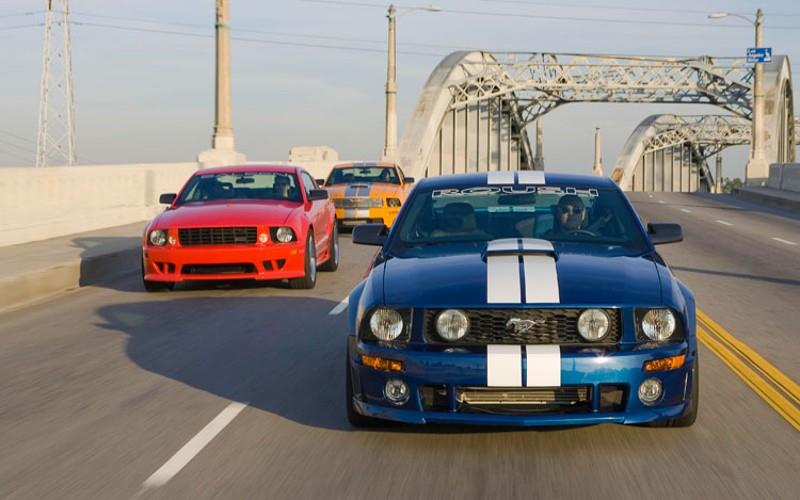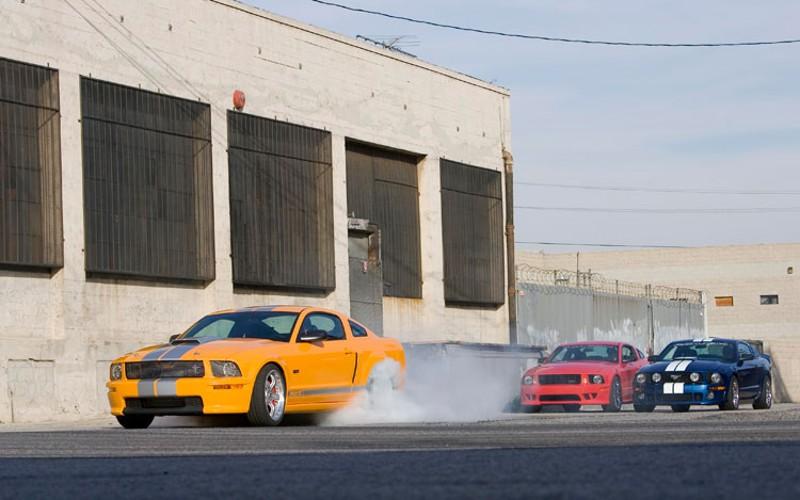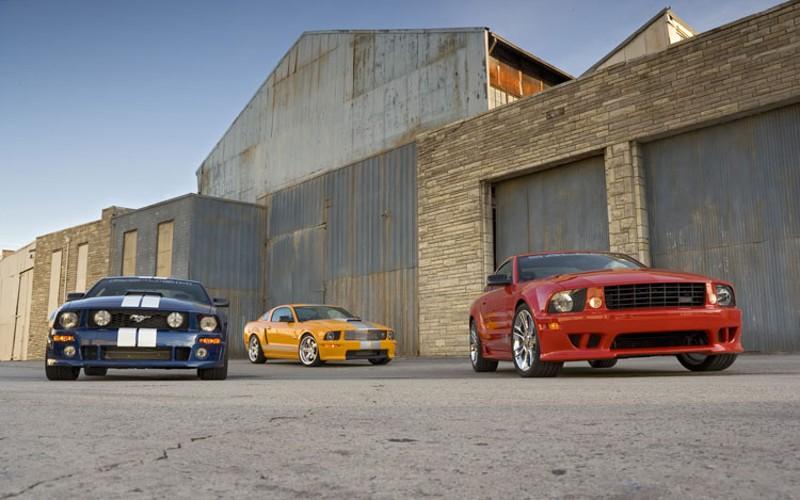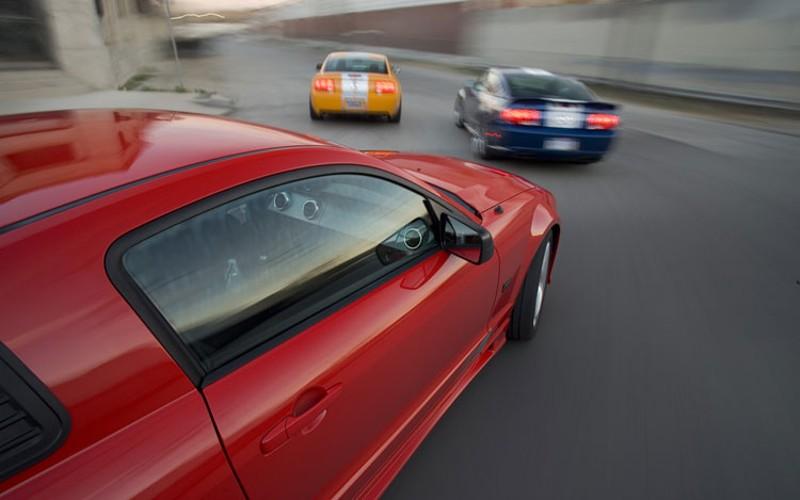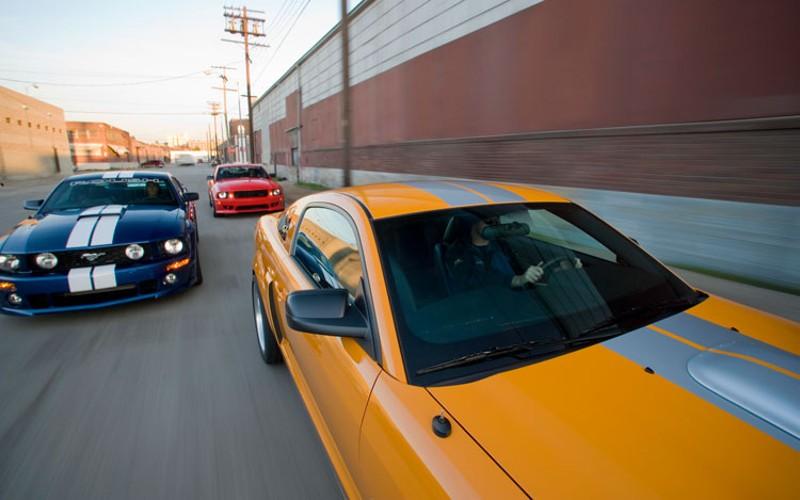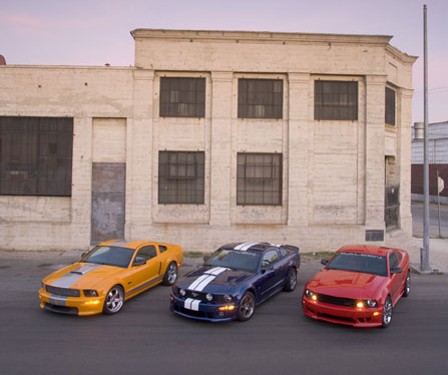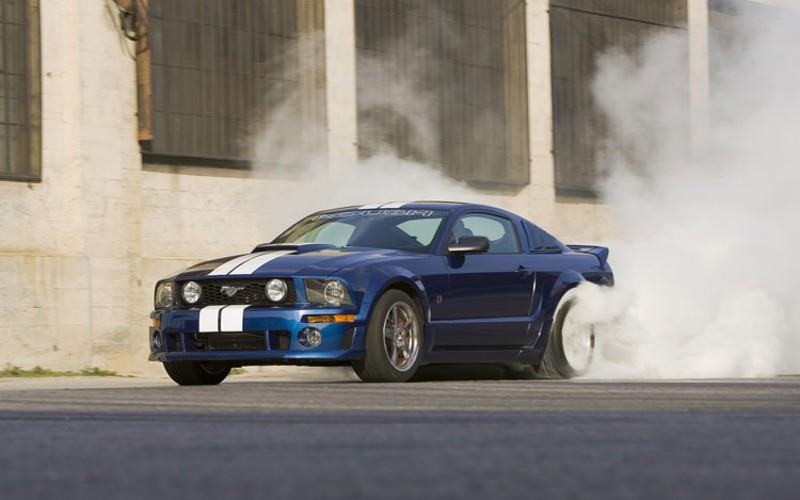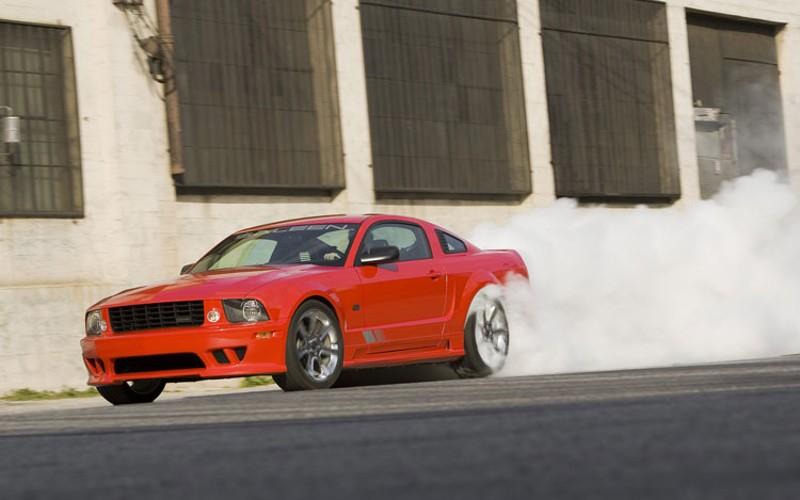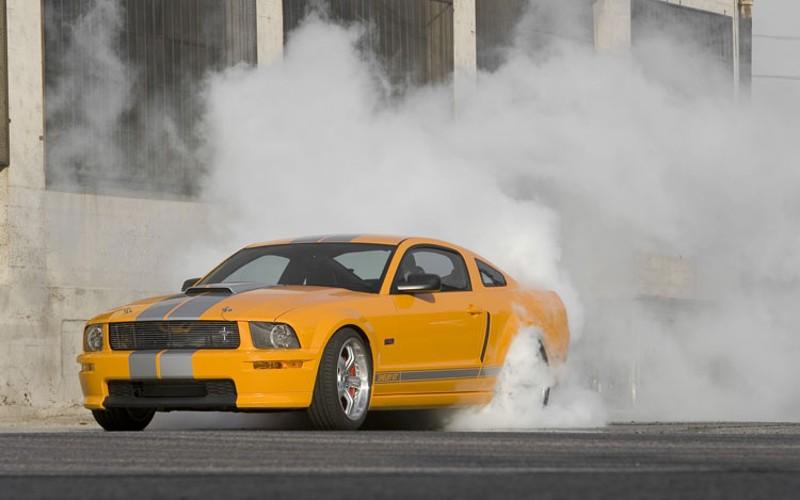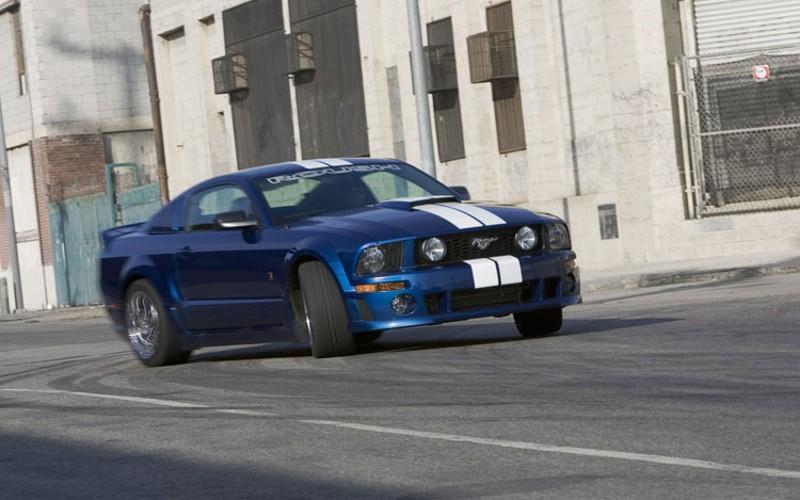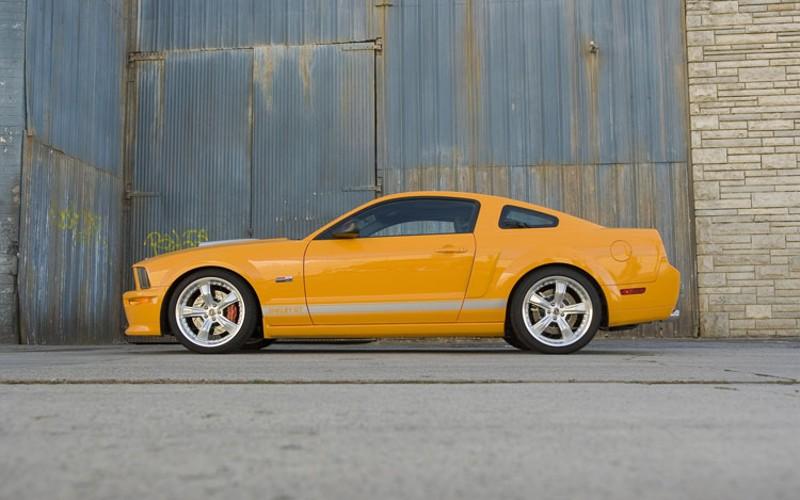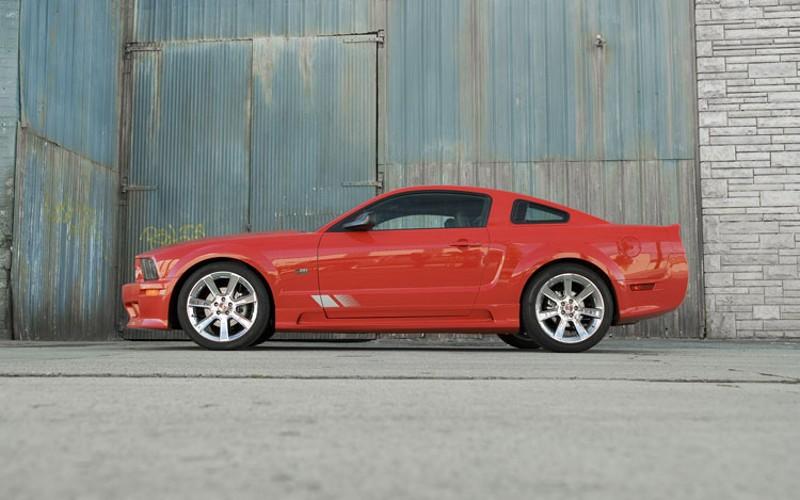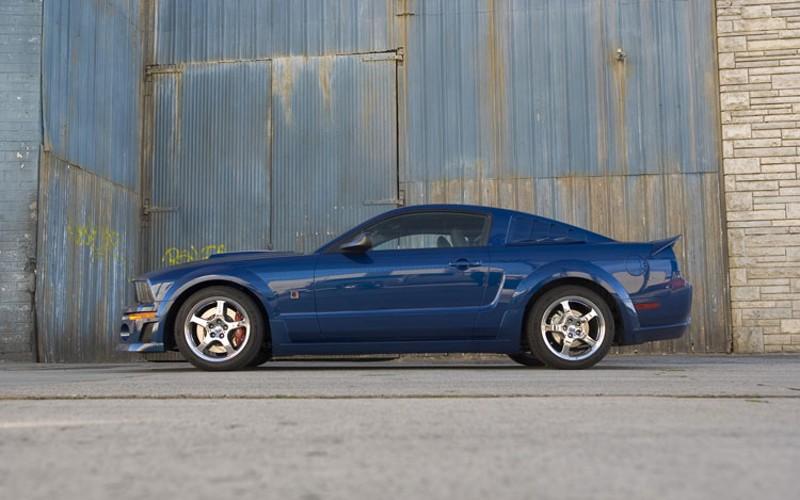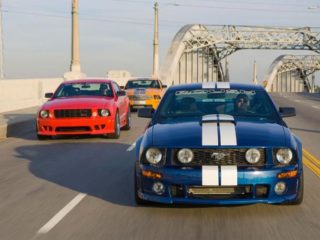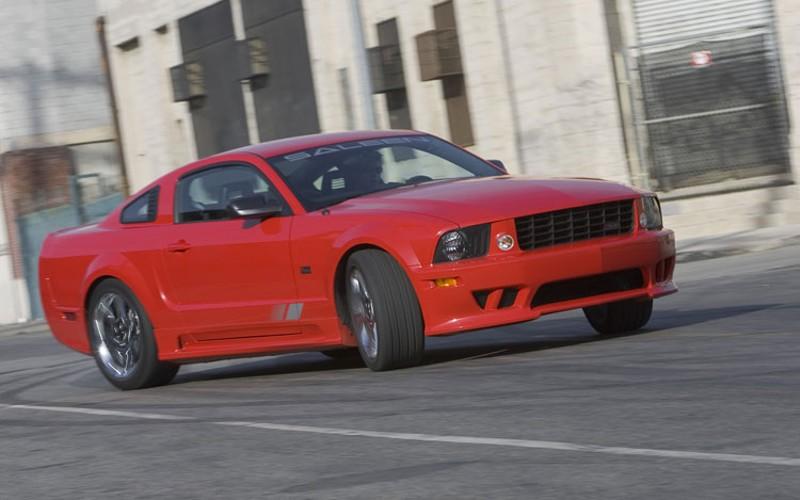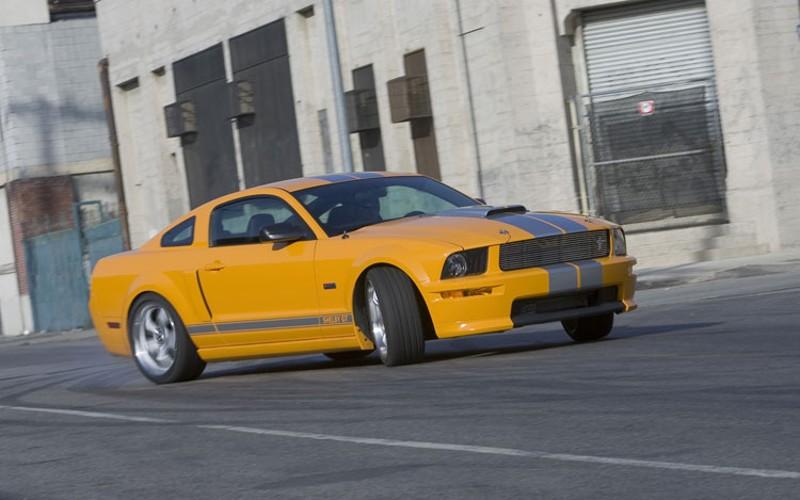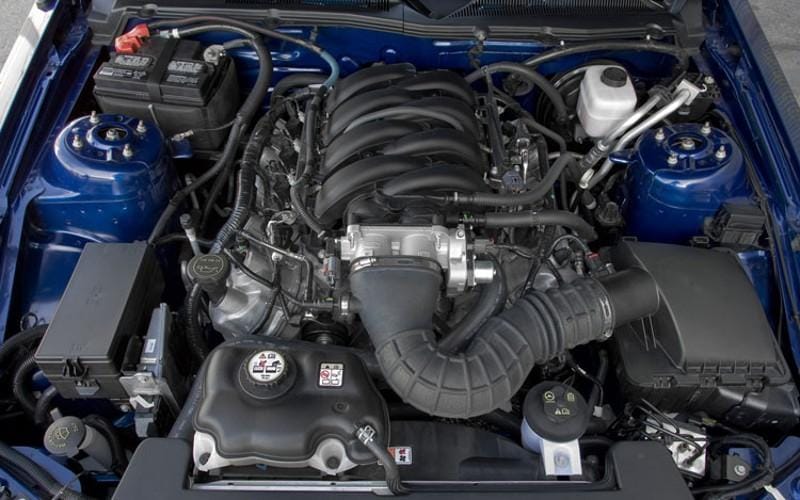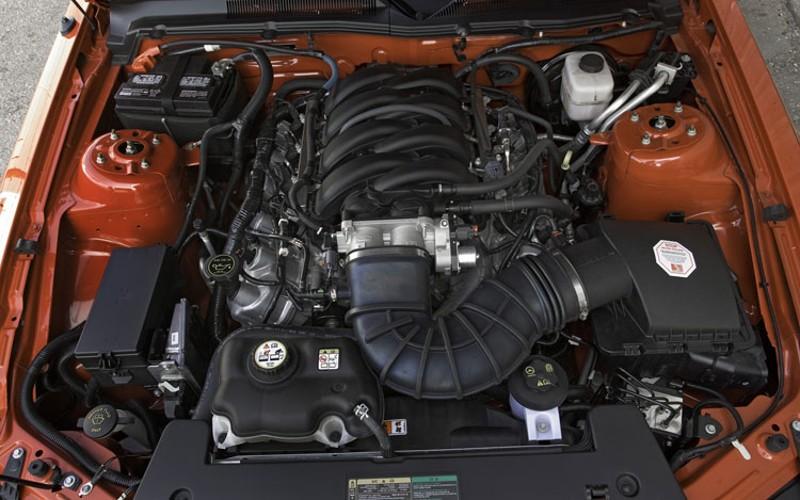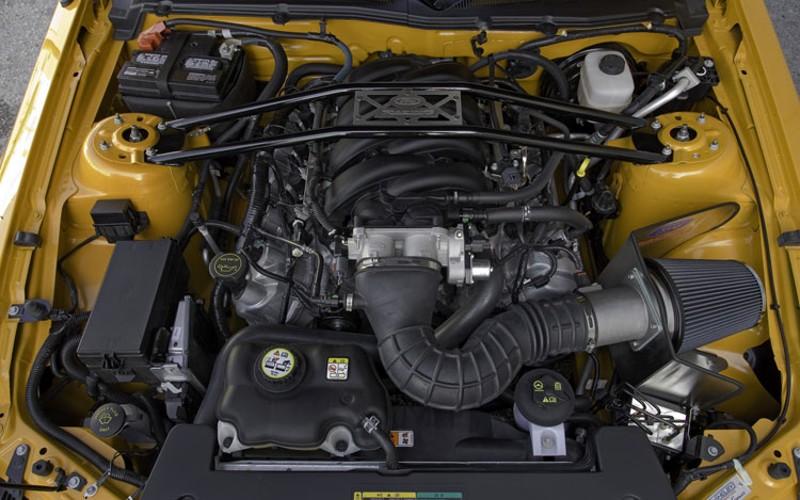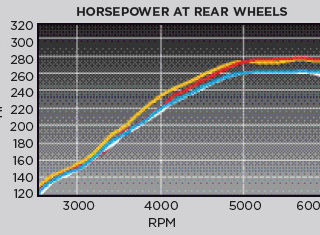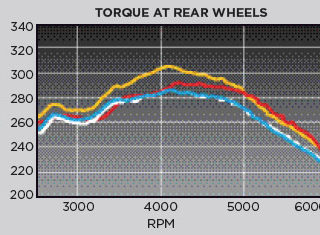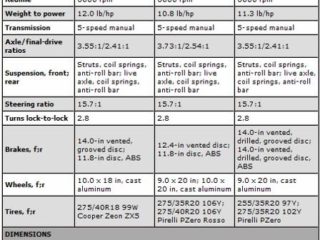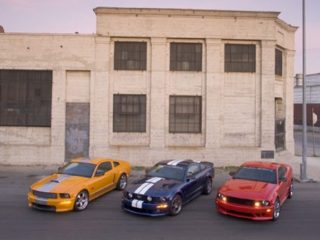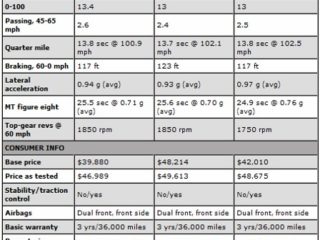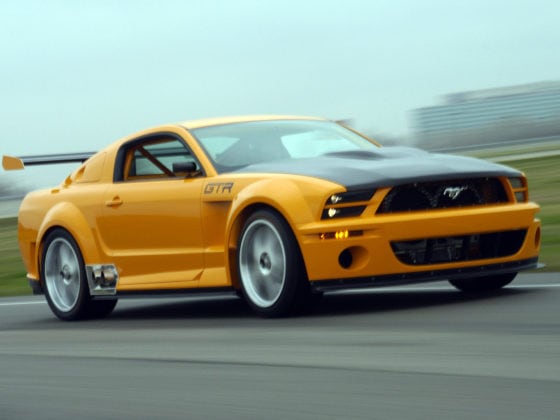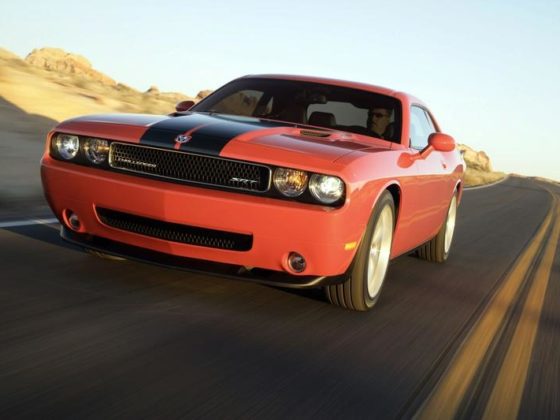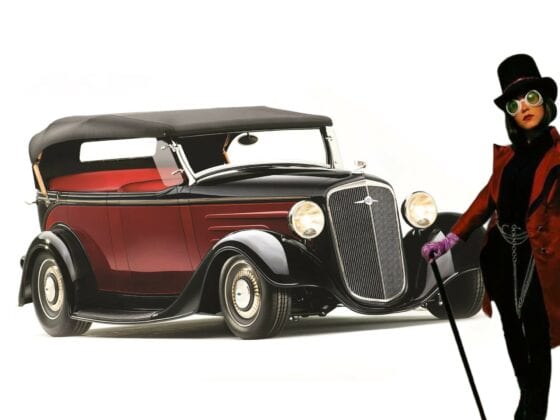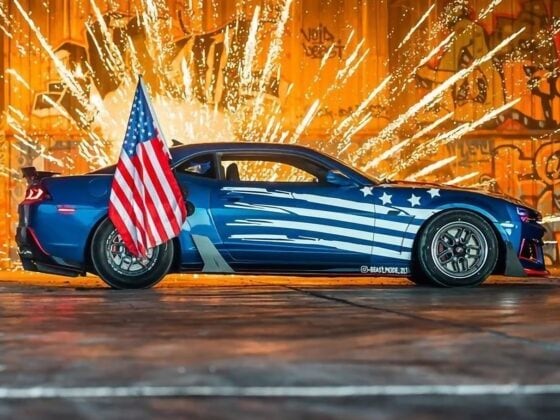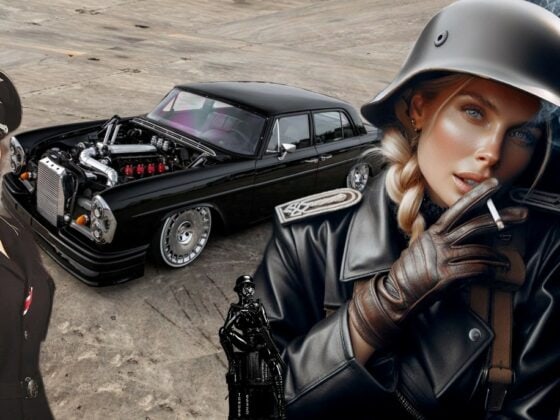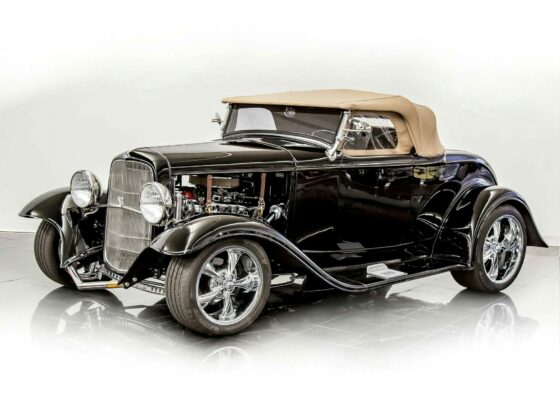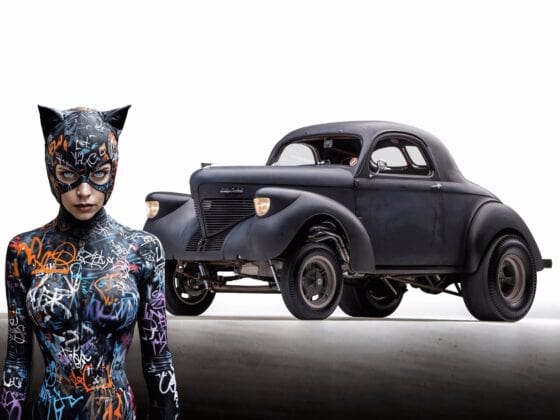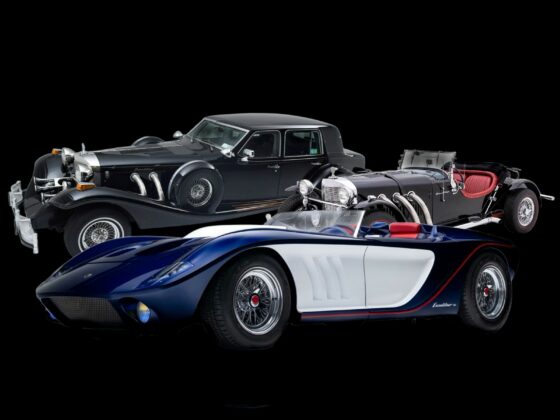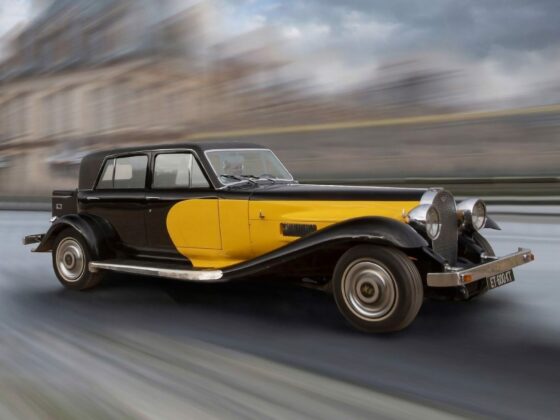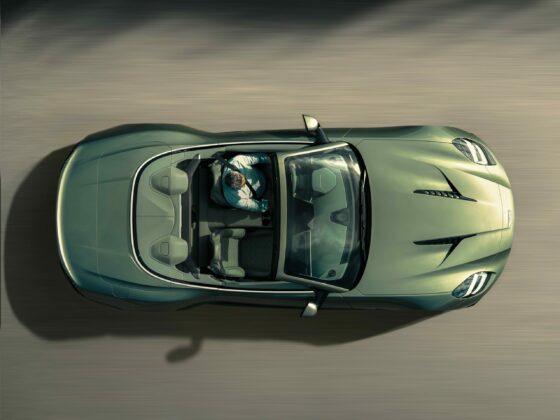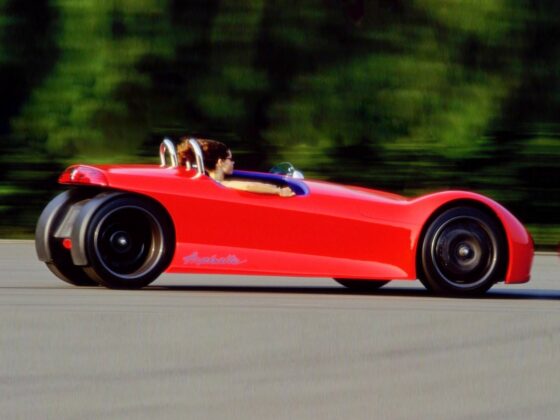Mustang’s: Shelby, Rouch, Saleen !
Suffice it to say, the Mustang has been a huge hit for the Blue Oval-in the public eye-and to the competition.
In 2007, the Ford Motor Company moved 134,626 Mustangs, pulverizing the sales numbers of other rear-drive American sport coupes-the Chevy Corvette, the Pontiac GTO, and the Dodge Viper-which tallied sales of just 33,685, 4200, and 435, respectively.
The downside to the ‘Stang’s copious sales, though, is anonymity.
Save for a few different wheel styles, the occasional rear wing, some stripes, and optional foglamps, every one of Ford’s 134,000-plus ponies looks decidedly similar.
Luckily, there are myriad tuners out there who’ll customize a ‘Stang, giving it a unique appearance that stands out from the rest of the herd.
Now if you’re a Mustang maniac, the thought of seeing your pride and joy galloping around every street corner does little to boost the ego, much less quash buyer’s remorse.
Of course, any tuner can tweak a car’s faade, affixing stripes and decals, swapping wheels and tires, and fiddling with fascias.
The real challenge comes from modifying what lies underneath the skin-suspension, brakes, and structure-to create a unique feel that delivers a tuner’s idea of perfection while still providing the core Mustang characteristics, i.e., tire-burning torque, brisk acceleration, and lively handling.
Jack Roush, Steve Saleen, and Carroll Shelby all have amassed achievements in motorsport and have managed to transfer their expertise from the racetrack to their namesake companies, each of which rolls out a spicy variety of naturally and artificially fed road cars.
Scouring today’s posse of tuners reveals three companies that not only boast a long history of successful Mustang makeovers but also accomplished “makeunders.”
For this comparison, we asked each tuner to send us its supreme entry-level stallion, replete with chassis upgrades but sans superchargers or turbochargers.
Attempting to appropriately match force-fed Mustangs, much less ensure they aren’t overboosted, is a chore we’ll tackle at a later date.
For now, saddle up and come along for the ride, au natural.
To discern exactly what our tuners are touting, we thought it best to compare their modified works with the stock counterpart.
A stock Mustang GT makes its case as the most pony for the fewest pennies.
Thus, a phone call to Ford netted us a $33,280 GT Premium, which came fitted with the familiar three-valve 300-horse V-8, Tremec five-speed manual, and 3.55:1 axle ratio.
Lightest of the group by 34 pounds, the GT was also the slowest, but not by much-0 to 60 in 5.3 seconds and the quarter mile in 13.9 at 101.7 mph-trailing the quickest of the tuners by only 0.2 second.
It trailed in handling, too, but again not by leaps or bounds, recording respectable results of 0.87g lateral acceleration and 25.9 seconds in the figure eight.
Our stocker, loaded with a $460 interior upgrade package, $195 Sirius Satellite Radio, $575 heated seats, and a $1995 nav system, came better equipped than did our tuners, yet delivered a suppler ride, smoother gearbox, and, as we stated, performance figures that nip at the tuners’ hooves.
Plus, for $14,000 to $16,000 less, the stock GT is a comparative steal.
And if it were our money?
We’d take the GT and pocket the change. Or we’d seriously consider the quicker Corvette or more refined 335i Coupe.
Jack Roush, a former Ford employee who left the automaker to start Roush Performance Engineering in 1976, has experienced victory in such series as Trans-Am, IMSA, and most notable, NASCAR.
So in 1995 when he founded Roush Performance Products, a company that would sell crate engines and aftermarket parts for one of his favorite vehicles, the Mustang, it’s no surprise that he carried over his winning ways.
But would they find their way into this shootout?
To find out, RPP delivered to our offices a Mustang with the Stage 2 package, an $11,635 enhancement that includes a redesigned front fascia with unique foglamps and chin spoiler; special rocker panels and rear valance and wing; a Roush window banner; a high-performance exhaust system; 18-inch chrome wheels with Cooper Zeon tires; and a suspension composed of proprietary struts, dampers, springs, and anti-roll bars.
Our test vehicle, which started life as a $27,445 Mustang GT Deluxe, also came with a bevy of options, including a $2699 14-inch front brake upgrade, a $445 short-throw shifter, and $1725 leather-covered sport seats.
Final tally?
A Chili’s dinner shy of $47,000
Surprisingly, the stock GT, which managed times of 5.3 and 13.9 at 101.7, respectively, actually made one more horsepower on the dynamometer (see sidebar)-just goes to show that “matching” stock engines always vary slightly.
Weighing 3592 pounds, 35 pounds heavier than the stock GT, but 22 pounds lighter than the Saleen, the Roush, featuring a bone-stock 300-horsepower three-valve 4.6-liter V-8 and a 3.55:1 axle ratio, rushed from 0 to 60 mph in 5.1 seconds and through the quarter mile in 13.8 at 100.9 mph.
With minimal but welcome acceleration improvements in the bag, the Stage 2 attacked the handling exercises, posting a sticky 0.94 g on the skidpad-second best to the Shelby and substantially better than the stock GT-and a 25.5-second run through the figure eight, again, trailing only the Shelby but superior to the GT.
The Roush is the most composed and neutral of the three, making it the easiest in which to approach the limit.
Credit the larger 35mm front and 24mm rear anti-roll bars (versus stock’s 34mm front and 20mm rear), 35-percent-stiffer springs, W-rated summer tires, and one-inch-lower ride height.
And the brakes?
An upgrade, indeed, providing excellent feel and performance, halting the Roush from 60 to 0 in 117 feet, 13 feet shorter than the GT.
Out on city streets and country roads, the Roush was praised for its supple ride, poised handling, and basso profundo exhaust note.
Could be the best ride/handling compromise, but overall not the best package compromise.
What gives?
The slow throttle response, stiff, notchy shifter, and cheesy add-ons-the window banner, the pushed-out nose, and the vestigial hood scoop-make it hard to pick the Roush.
Inside, the faux-carbon-fiber trim also was deemed too cheddar, although the sport seats were lauded for their comfort and quality.
At the end of the day, despite its planted moves and relatively thrifty price tag, the Roush was considered the easiest to live with during the week, but the least exciting to take out on the weekend.
But although Saleen has departed, new CEO Paul Wilbur, a former general manager at Jeep, along with Chris Theodore, past vice president of product development at Ford, are forging ahead, promising to continue Saleen’s quest “to build performance cars for the enthusiast.”
Steve Saleen, who created his company in 1983 and grew it into one of the premier specialty manufacturers of Ford-based products and the S7 supercar, is, ironically, no longer an employee of Saleen, Inc., having left in June 2007 for Chamco Auto of China, which hired the Mustang Hall of Famer to help establish its dealer network in the U.S.
For this test, Saleenless Saleen shipped us an S281-3V, the docile member of the S281 family, which also includes the 465-horsepower Supercharged and the 550-horsepower Extreme.
Carrying an as-tested price of $49,613, the S281-3V was the priciest of the group, but also the most distinctive, thanks to unique front and rear fascias, $1399 20-inch chrome wheels, and such distinguishing interior bits as leather and Alcantara sport seats, black-faced six-gauge instrument panel, and billet shift knob.
Armed with a 3.73:1 axle ratio, the Saleen, with its power advantage, paid dividends at the dragstrip, going 0 to 60 in 5.1 seconds and the quarter mile in 13.7 at 102.1 mph, the latter a tenth quicker than the others’.
Underhood, Saleen-specific mods continue, highlighted by a 335-horsepower three-valve V-8 that sports a “PowerFlash Performance Calibration,” a 98mm mass airflow sensor, power pulleys and damper, a high-flow inlet tube, and a 2.5-inch performance exhaust system. With the most horsepower of the group, the 3614-pound Saleen, at 10.8 pound/horsepower, also claimed the best weight-to-power ratio.
Around the skidpad and figure eight, though, the S281, utilizing a “Racecraft Suspension” with linear-rate coil springs, a larger 35mm front anti-roll bar, and N2 dampers, fell behind the Roush and Shelby, posting the least grip and slowest time.
The Saleen exhibits a lot of understeer in these tests and seems the most resistant to rotation.
The S281 was also the most resistant to stopping, needing 123 feet-seven more than the other two-to erase 60, a feat attributable to the stock brakes.
In real-world tests, the Saleen rated better than at the track, invigorating our senses with confidence-inspiring handling, a slick gearshift, and a high-pitched free-revving engine.
Feeling racy?
Take the Saleen for a spin.
But why did it place behind the Shelby?
All the judges deemed several of the Saleen’s styling cues-namely, the front spoiler, the rear quarter-window treatment, and the chrome wheels-as too gaudy, while its hard-to-read gauges, squishy brake feel, and steep sticker price were graded inferior, too.
All of which relegates the S281-3V to middle-of-the-pack status.
And he created, um, the Shelby Cobra-again, not too shabby.
Carroll Shelby, who recently turned 85 years young, set speed records at Bonneville and won at Le Mans-not too shabby.
Today, his Las Vegas-based company, Shelby Automobiles, is keeping shabbiness at bay, churning out a range of sexy and powerful Mustangs, including the Shelby GT, the GT500KR, and the 319-horsepower GT-C pictured here.
Wearing a not-so-subtle Grabber Orange suit with a silver Mohawk and billet front grille, the $48,675 GT-C was, naturally, acclaimed as the most striking.
The wheels are the nicest here-and with the front Baer six-piston monoblock calipers lurking behind, they’re downright menacing.
Tack on $1000 for guzzling gas, and the Shelby leaves the checkout line about a grand shy of the Saleen.
Our particular test car, which originally rolled off of its Flat Rock, Michigan, assembly line as a $32,510 GT Premium, became a finished product in Sin City, receiving $4190 Baer brakes, $2475 AR wheels with Pirelli tires, and the $8500 GT-C package.
In addition to the obvious cosmetic changes, the GT-C package incorporates a Ford Racing Handling Package-dampers, lowering springs, anti-roll bars, and a strut-tower brace-an X-pipe exhaust, a 3:55 axle ratio, a Hurst short-throw shifter, and a Ford Racing Power Upgrade Package that contains a 90mm cold-air intake, performance mufflers, and an engine-management performance calibration.
On the track, the Shelby equaled the others 5.1-second 0-to-60 sprint, while matching the Roush’s quarter-mile time of 13.8 seconds but at a best-in-test 102.5 mph.
Braking?
At 117 feet from 60, the Shelby matched the Roush for shortest distance. From straight lines to curves, the GT-C continued to excel.
The Shelby’s superior 0.97 g and 24.9-second figure-eight time are indicative of the commendable chassis tuning.
That said, it does get upset by mid-corner bumps and is more prone to oversteer.
Devouring public roads, the Shelby was lauded for its crisp turn-in, fade-free brakes, responsive throttle, and tenacious grip.
The ride, even with 20s and low-pro rubber, was scored a bit rough but no harsher than the Saleen’s.
Downsides?
A sometimes stubborn shifter, an interior that appeared more stock than aftermarket, and an occasionally grating exhaust note, sounds so manly, I swear I grew two more chest hairs…bringing my total up to three.
In this group, the Shelby is the most of the most-the most handsome, the most capable, and, well, the most hair-raising.
And when those are chest hairs, you know your heart is pounding for all the right reasons.
1ST PLACE SHELBY GT-C
Live from Las Vegas, Beauty and the Beast!
2ND PLACE SALEEN S281-3V
Fast, racy, and distinct, but overstyled, overweight, and overpriced.
3RD PLACE ROUSH STAGE 2
Cheesy bits and pieces and lack of edge taint an otherwise tasty treat.
Horsing Around: Who’s legit? Who’s fooling around?
To answer these burning questions, our friends at K&N Engineering, Inc., lent us their dual side-by-side in-ground dynamometer setup. We performed three passes in all four cars, each time in third gear. Expecting roughly a 15-percent loss due to drivetrain inefficiencies, let’s see which tuner is practicing horseplay.
White…..Stock Mustang GT
Blue……..Roush Stage 2
Red……..Saleen S281-3V
Yellow….Shelby GT-C
STOCK MUSTANG GT
CLAIMED: 300 hp @ 5750 rpm, 320 lb-ft @ 4500 rpm
DYNO TESTED: 262 hp @ 5545 rpm, 285 lb-ft @ 4170 rpm
VERDICT: Horsepower (+7) and torque (+13) rate higher than expected. LEGIT.
ROUSH STAGE 2
CLAIMED: 300 hp @ 5750 rpm, 320 lb-ft @ 4500 rpm
DYNO TESTED: 261 hp @ 5815 rpm, 286 lb-ft @ 4140 rpm
VERDICT: Horsepower (+6) and torque (+14) rate higher than expected. LEGIT.
SALEEN S281-3V
CLAIMED: 335 hp @ 5200 rpm, 345 lb-ft @ 4500 rpm
DYNO TESTED: 277 hp @ 5590 rpm, 292 lb-ft @ 4210 rpm
VERDICT: Horsepower (-8) and torque (-1) rate lower than expected. HORSEPLAY.
SHELBY GT-C
CLAIMED: 319 hp @ 5750 rpm, 330 lb-ft @ 4500 rpm
DYNO TESTED: 273 hp @ 5790 rpm, 304 lb-ft @ 4100 rpm
VERDICT: Horsepower (+2) and torque (+24) rate higher than expected. LEGIT.







